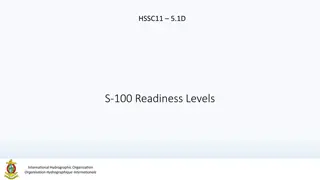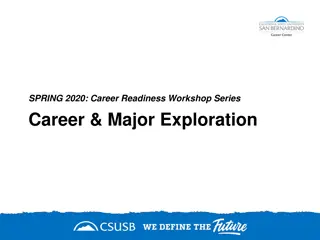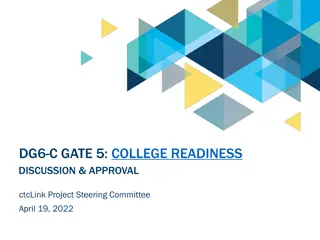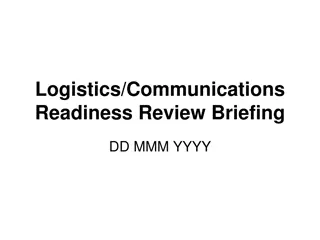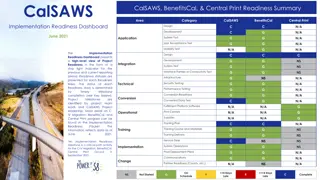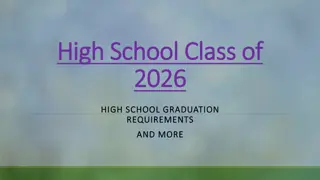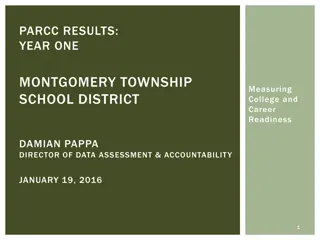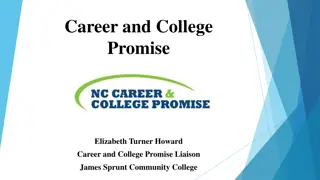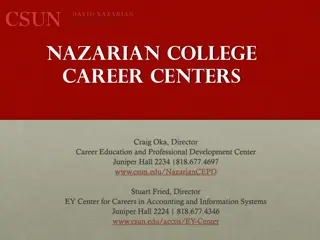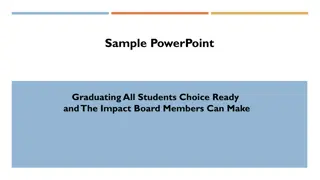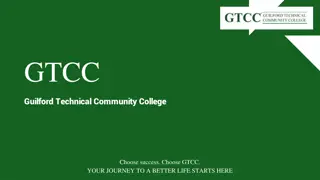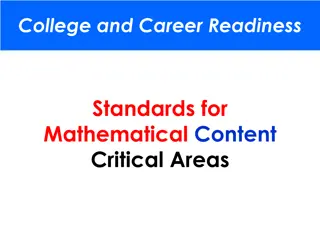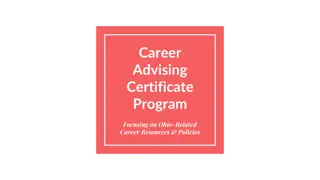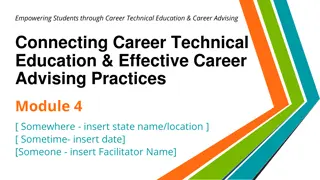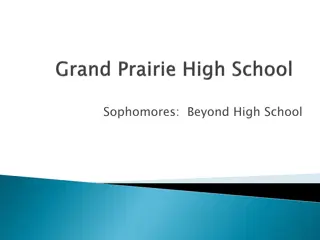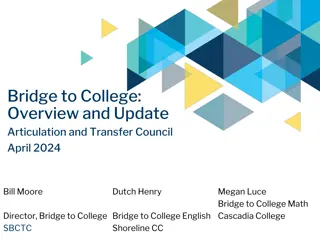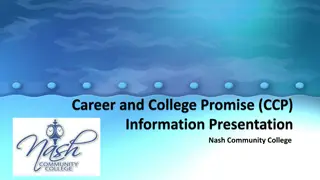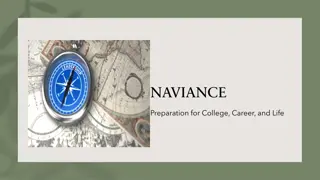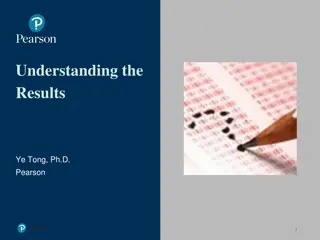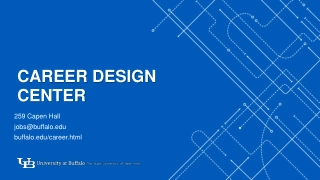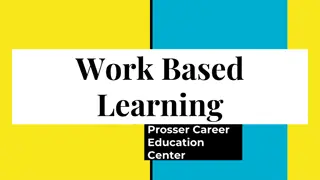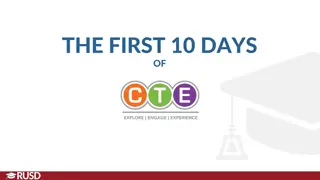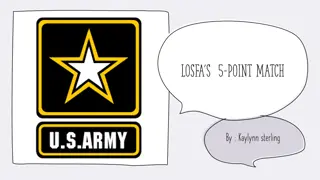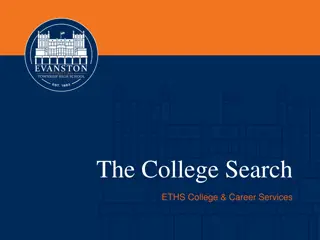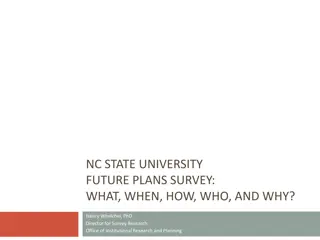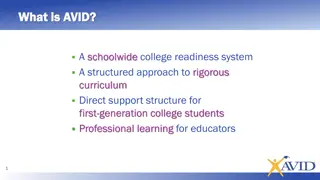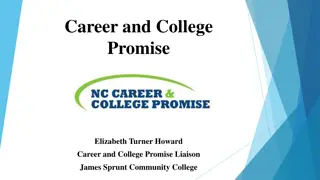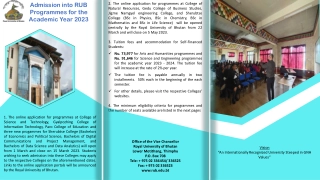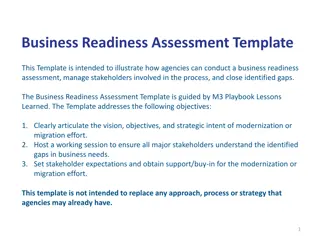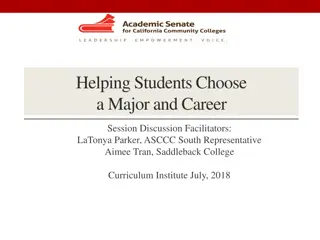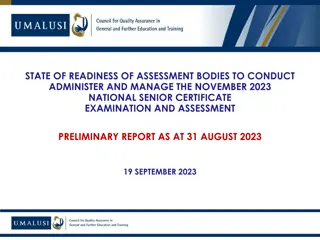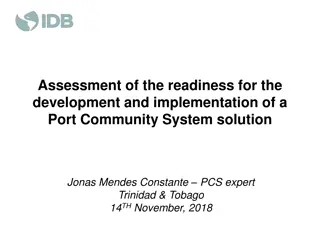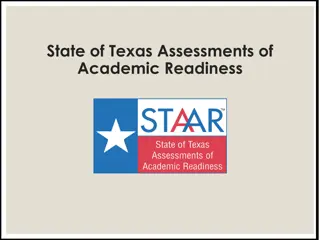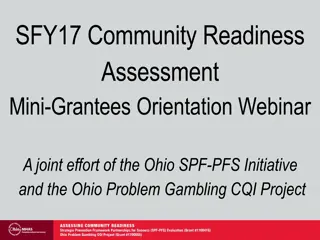College and Career Readiness
Explore a comprehensive guide on College and Career Readiness Standards for Mathematical Practice, District-Wide Math Goals, Session Outcomes, Common Core Mathematics Standards, and more. Dive into the importance of using appropriate tools strategically, attending to precision, and developing mathematical habits of mind for enhanced learning outcomes.
Download Presentation

Please find below an Image/Link to download the presentation.
The content on the website is provided AS IS for your information and personal use only. It may not be sold, licensed, or shared on other websites without obtaining consent from the author. Download presentation by click this link. If you encounter any issues during the download, it is possible that the publisher has removed the file from their server.
E N D
Presentation Transcript
College and Career Readiness Standards for Mathematical Practice Overview
District-Wide 2013-14 Math Goals Collaboratively plan, deliver, reflect upon, and revise instruction that differentiates for all learners and includes the Standards for Mathematical Practice: MP1 - Make sense of problems and persevere in solving them MP3 - Construct viable arguments and critique the reasoning of others MP4 - Model with mathematics Build understanding of the Common Core instructional shifts focus, coherence, and rigor Integrate technology in support of teaching and learning
Session Outcome Collaboratively define Common Core Standards for Mathematical Practice 1, 3, and 4
College and Career Readiness Practice Standards Common Core Mathematics Standards Content Standards
Common Core Standards for Mathematical Practice Overarching Habits of Mind MP1 Make sense of problems and persevere in solving them. MP6 Attend to precision. Reasoning & Explaining MP2 Reason abstractly and quantitatively. MP3 Construct viable arguments and critique the reasoning of others. Modeling & Using Tools MP4 Model with mathematics. MP5 Use appropriate tools strategically. Seeing Structure & Generalizing MP7 Look for and make use of structure. MP8 Look for and express regularity in repeated reasoning.
Frayer Model Definition Characteristics Example Non-Example
MP5 Use appropriate tools strategically. Definition Characteristics Choose appropriate tools. Use mathematical tools correctly and efficiently. accessing resources MP5 What other tools might you use? concrete models, yard stick calculator, Color Tiles, base 10 blocks measuring the playground using color tiles Example Non-Example
MP6 Attend to precision. Definition Characteristics Communicate your mathematical thinking clearly and precisely. Be accurate when you count, measure, & calculate. accuracy, vocabulary, attention to detail MP6 vocabulary word wall, peer editing What s another word for that? How might you label the answer? that thing numbers w/o labels The number on the top of the fraction Example Non-Example
Common Core Standards for Mathematical Practice Directions Silently read about your assigned math practice Unpack the practice standard with the Frayer Model Collaboratively chart your math practice Frayer Model Be ready to share with the larger group
MP2 Reason abstractly and quantitatively. Definition Characteristics Explain the meaning of numbers, words, pictures, symbols, tables, graphs, and concrete objects. contextualize & decontextualize, in & out of context MP2 Singapore bar model, What do the numbers used in the problem represent? This shows Ours is not to reason why, just invert and multiply. Example Non-Example
MP1 Make sense of problems and persevere in solving them. Productive Struggle: Students are more likely to retain what they learn when they expend effort solving problems that are within reach and grappling with key mathematical ideas that are comprehensible but not yet well formed. Carnegie Foundation for the Advancement of Teaching 2013
MP3 Construct viable arguments and critique the reasoning of others.
MP4 Model with mathematics. In life and work, you meet new situations so you need to learn how to handle problems that are not just like those you have tackled before. Burkhardt 2006
MP7 Look for and make use of structure. Definition Characteristics See and understand how numbers and shapes are organized and put together as parts and wholes. operating, dissecting, discovering, deconstruct, decompose & compose MP7 112 is 11 tens & 2 ones, 1 hundred & 12 ones, 1 hundred, 1 ten & 2 ones teaching the algorithm without connections Example Non-Example
MP8 Look for and express regularity repeated reasoning. Definition Characteristics Use patterns and structures to create and explain rules and shortcuts. Use the rules and shortcuts to solve problems. shortcuts MP8 Will the same strategy always work? starting from scratch, no looking back Example Non-Example
What evidence of math practices 1, 3, and/or 4 do you see in this sample Smarter Balanced Assessment Consortium item? Pablo solved a multiplication problem using two different methods. He made a mistake in either Method W or Method Z. SBAC Grade 4 Sample Extended Response Identify the method where Pablo made a mistake and explain what he should do to correct it. Type your answer in the box below.
What are the implications of this SBAC item for classroom instruction? Pablo solved a multiplication problem using two different methods. He made a mistake in either Method W or Method Z. SBAC Grade 4 Sample Extended Response Identify the method where Pablo made a mistake and explain what he should do to correct it. Type your answer in the box below.
Common Core Standards for Mathematical Practice Jordan School District
CCSSM Instructional Shifts Focus: Instruction is focused on grade level standards. Practice standards help us to focus deeply on what is emphasized in the content standards, so that students gain strong foundations.
CCSSM Instructional Shifts Coherence: Instruction should be attentive to learning across grades and linking major topics within grades. Analyzing practice standards in vertical teams supports communication and unity in message across grades.
CCSSM Instructional Shifts Rigor:Instruction should develop conceptual understanding, procedural skill and fluency, and application. Skills without conceptual understanding are meaningless. Conceptual understanding without skills is inefficient. Without problem solving, skills and conceptual understanding have no utility. - NCTM
Session Outcome Collaboratively define Common Core Standards for Mathematical Practice 1, 3, and 4
College and Career Readiness Thank You



